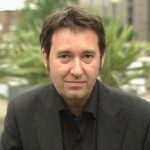Lien vers Pubmed [PMID] – 14648479
Med Sci (Paris) 2003 Nov;19(11):1081-90
The autistic disorder was firstly described by Leo Kanner sixty years ago. This complex developmental disability is characterized by social and communicative impairments and repetitive and stereotyped behaviours and interests. The prevalence of autism in the general population is about 1 in 1,000, with four males affected for one female. In approximately 15% of the cases, autism is associated with known genetic disorders, such as fragile X syndrome, tuberous sclerosis or Rett syndrome. Nevertheless, a recognised medical etiology can only be identified in a minority of cases. A higher recurrence risk in families with autistic subjects (45 times greater than the prevalence in the general population) and higher concordance for autism among monozygotic (60-90%) than dizygotic (0-10%) twins argue for a genetic predisposition to idiopathic autism. The past decade has been marked by an increased interest in the genetic basis of autism, with a series of multiple independent whole genome scans and chromosomal abnormalities studies. These analyses have pointed out several candidate regions on chromosomes 2q, 7q, 6q, 15q and sex chromosomes. These regions possess candidate genes that have been screened for mutations or association with autism. However, a clear involvement of a major susceptibility gene (or genes) in autism remains far from clear. The results from linkage studies and the clear drop in the concordance rates between monozygotic and dizygotic twins suggests that the genetic aetiology of autism is certainly heterogeneous (different genes in different families) and polygenic (more than one affected gene per individual). The almost finished sequence of the human genome and the generation of haplotype maps will shed light on the inter-individual genetic variability and will certainly increase the power and reliability of association studies for complex traits, such as autism.

